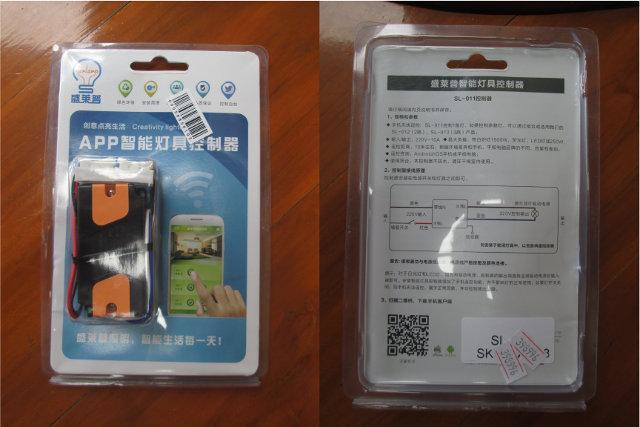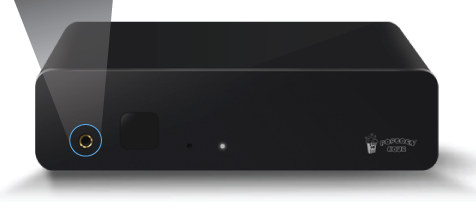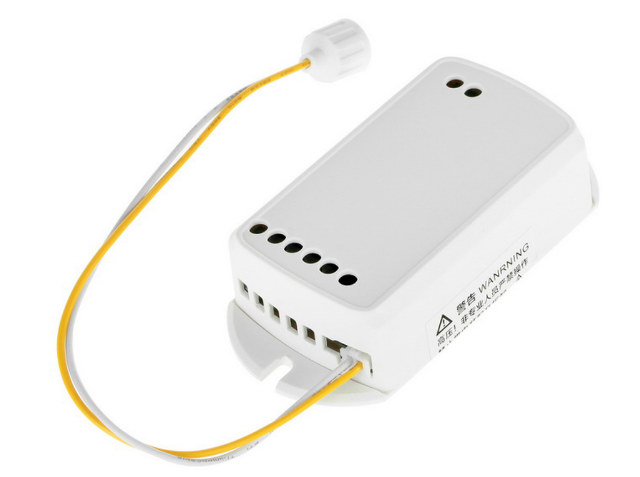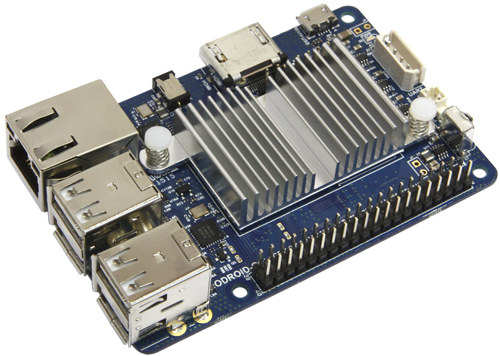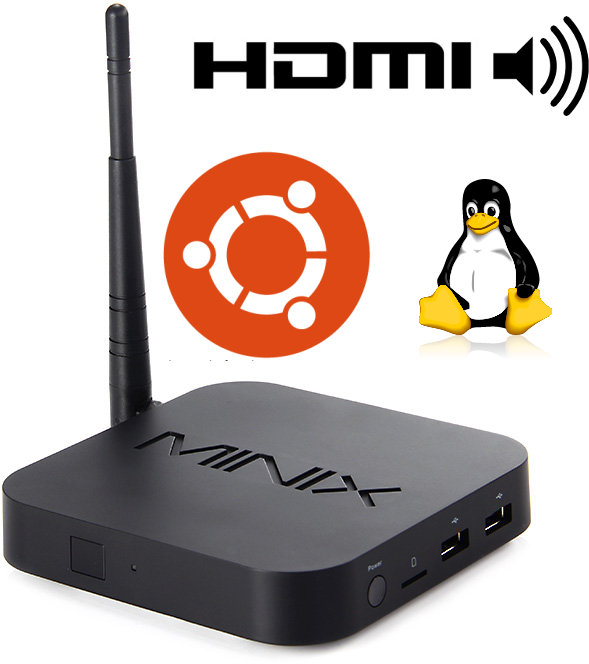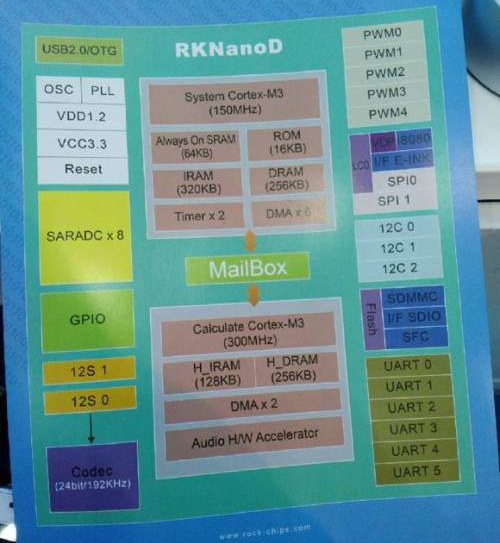I normally put my smartphone on a shelf to listen to music while taking a bath or showering, and a few years back I thought about using Bluetooth speakers, but few solutions were waterproof, and/or the price must have been high, so I forgot about it. Following a post on ARMDevices.net about GTEK speakers, I found out there are now many waterproof Bluetooth speakers to choose from with prices starting as low as $7. But I found GTEK GP100 speakers quite interesting, as beside being waterproof (IPx7), there are also rugged and suitable for outdoor activities, come with a 3,000 mAh battery good for 8 to 10 hours, and can fit into your bicycle bottle’s holder. Some of key features of GTEK GP100 (GT-D201): Connectivity – Bluetooth 3.0 (Website also says Bluetooth 2.1 + EDR); 10 meter range Speakers – 2x 5W (or 3W?); 80db+ SNR; 80Hz – 18Khz frequency […]
ChromeCast 2.0 and ChromeCast Audio Announced for $35
Google released the original ChromeCast in 2013. The $35 device allows users to stream online video from your smartphone to your big TV, and since then Google and the community has brought various improvement to make more with the device, and thousands of apps can be installed in the little device. Google has now released a new ChromeCast, as well as ChromeCast Audio to stream audio to speakers. The hardware has been upgraded but the complete specifications are not available, but we do know ChromeCast 2.0 support 802.11 b/g/n and 802.11ac for higher quality 1080p video streaming, and Marvell tweeted about the new ChromeCast devices, so it’s likely another Marvell SoC has been used, maybe Armada 1500 Plus (88DE3108) [Update: ChromeCast 2.0 is based on Armada 1500 Mini Plus (88DE3006) dual core Cortex A7 processor] The new ChromeCast still works with iPhones, iPads, Android phones and tablets, Mac and Windows […]
Mini Review of Semlamp SL-011 Audio Controlled Relay for Home Lighting
Last month, I wrote about Semlamp SL-012 a smartphone controlled light switch for 2 lamps that sells for about $11 on DX, and contrary to most others don’t use Bluetooth, nor Wifi, but instead a simple microphone. I decided to try it out by purchasing SL-011 model, controlling only one light, for $8.22 on DealExtreme. Semlamp SL-011 Unboxing and Teardown That’s the package with some instructions in Chinese. The device has black and red wires to connect to 220V on the right of the picture below, blue and brown wires to connect to the lamp, and a microphone attached via a white cable. It’s quite easy to take apart, as they are just two screws to remove, and you can easily pop-up the bottom part of the case to access the board. The top of the board features JQC-3FF 24V relay supporting up to 10A @ 277VAC, as well as […]
Popcorn Hour A-500 PRO High-End Media Player is Powered by Sigma Designs SMP8758 SoC (Crowdfunding)
CloudMedia, previously known as Syabas, has been in the Linux media player business for many years, having developed various product based on Sigma Designs secure media processor. Popcorn Hour A-500 PRO is their latest media player, which the company claims have high-end audio and video quality thanks to an ESS SABRE Audio DAC, XLR connectors, and Sigma Designs SMP8758 dual core Cortex A9 processor and its VXP engine. Popcorn Hour A-500 PRO specifications: SoC – Sigma Designs SMP8758 ARM Cortex A9 processor @ 1.2 GHz with ARM Mali-400 GPU and VXP image processing engine System Memory – 2048 MB DDR3 Storage – NAND Flash for firmware, 1x SD card reader, internal SATA bay Video Output – HDMI up to 3840×2160 @ 30 Hz Audio Output Digital – HDMI, optical S/PDIF, and coaxial S/PDIF Analog – Stereo RCA jacks, XLR connectors, and headphones Audio DAC – ESS SABRE Audio DAC ES9018K2M […]
$12 Semlamp SL-012 Lamp Controller Let You Wirelessly Control Lights with Android or iOS Devices
WiFi smart sockets have come down in price with products like Orvibo Wiwo S20 selling for $16, but if all you want to do is control your lights, there’s an even cheaper option with Semlamp SL-012 lamp controller selling for just $11.92 on DealExtreme and allowing to control two lights independently with Android or iOS mobile devices. Specifications listed for Semlamp SL-012 : Voltage – AC 220-240V Max Current – 10A Dimmable – Yes Control Range – 10 meters Dimensions – 9.5 cm x 4.5 cm x 2.4 cm Weight – 59.5 g Material – Plastic Right, not that much information, and nothing about wireless connectivity. But the description also mentions that the device does not use Bluetooth, nor WiFi. So how is that possible? The answer lies with another picture shown on the right…. A microphone is attached to that yellow cable, and they are using audio to control […]
Hardkernel ODROID-C1+ Development Board is Now Shipping for $37
We already knew Hardkernel was working on ODROID-C1+ development board, an update the popular ODROID-C1 board with the same Amlogic S805 processor, storage and memory, but with a standard HDMI port replacing the micro HDMI port, I2S support, better micro SD card and HDMI-CEC support, an micro USB OTG port that can be used to power the board, and an included heatsink. The board is now up for sale for $37, or just $2 more than the original ODROID-C1 board. ODROID-C1+ specifications: SoC- Amlogic S805 quad core Cortex-A5 processor with a quad core Mali-450MP2 GPU System Memory – 1GB DDR3 Storage – eMMC 4.5 HS200 module socket for up to 64GB storage, and UHS-1 SDR50 micro SD slot Video & Audio Output – Type A HDMI port with CEC support Connectivity – Gigabit Ethernet USB – 4x USB 2.0 host ports, 1x micro USB OTG port Expansion Headers 40-pin Raspberry […]
MINIX NEO Z64W (Intel Atom Z3735F) mini PC gets HDMI Audio in Ubuntu
We’ve been able to run Ubuntu on Intel Atom Z3735F mini PCs, as well as other Linux distributions, for a while, but with an important caveat: HDMI audio would not work, so instead you had to use an external USB sound card to get any audio. Luckily the problem seems solved, as Linuxium has now released a script (audio-wifi-minix-neo-z64-release.sh) and relevant files that will patch your system to enable HDMI audio, and WiFI on MINIX NEO Z64W running Ubuntu. Ian Morrison (Liuxium) compiled a Linux kernel and the Wi-Fi driver, together with a modified DSDT (Differentiated System Description Table) table to fix an ACPI bug. He used John Pemberton’s Bay Trail Audio HDMI patch, as well as help from Paul Kendall for identifying the ACPI DSDT table bug, Bastien Nocera (hadess) for the wifi source code and DroidMote Server / Client for the wifi pointer. A quick demo shows WiFi […]
Rockchip RKNanoD is a Dual Core Cortex M3 MCU for IoT and Audio Applications
Rockchip is better known for their application processor like RK3188 or RK3288 found in tablets and mini PCs, but the company is also making lower power SoCs such as RKNanoC Cortex M3 micro-controller used in wireless audio applications, and more recently Rockchip demonstrated RKNanoD, a dual core Cortex M3 micro-controller for IoT and high-definition audio applications. Some key specifications and features of RKNanoD MCU: Cores ARM Cortex M3 @ 150 MHz with 64KB SRAM, 16KB RAM, 320KB iRAM, 256KB DRAM for system. ARM Cortex M3 @ 300 MHz with 128KB iRAM, 256 KB DRAM, and an audio H/W accelerator for compute tasks like audio decoding. Storage I/F – Flash, SDMMC, SDIO, SFC Display I/F – LCD, E-Ink Audio – 2x I2S, 24-bit / 192 KHz audio codec USB – USB 2.0 OTG Other I/Os – GPIO, 6x UART, 2x SPI, 3x I2C, 5x PWM, 8x SARADC 8x DMA, 2x Timers […]




